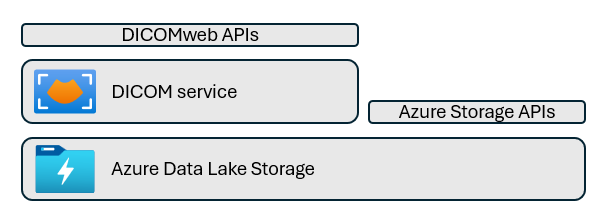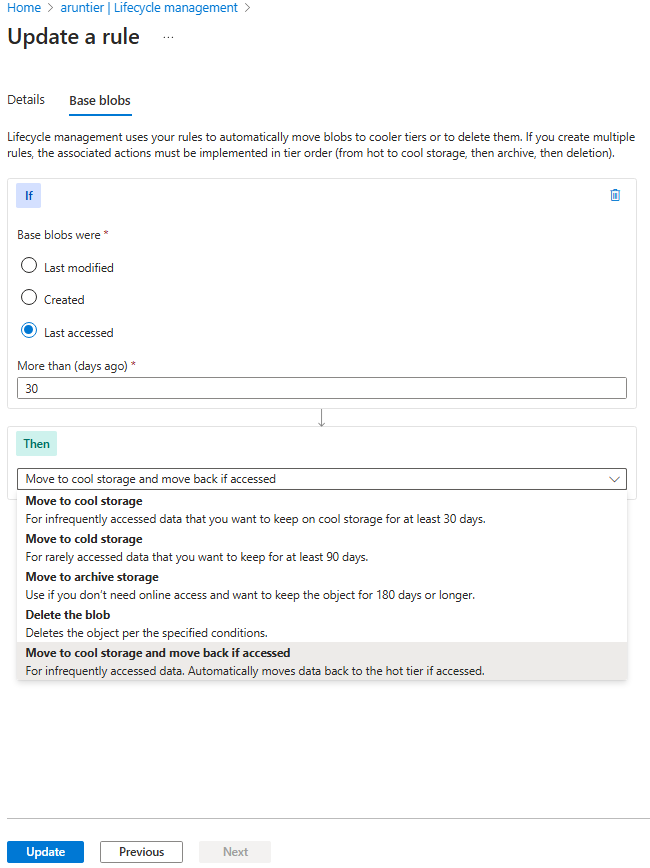Manage medical imaging data with the DICOM service and Azure Data Lake Storage
The DICOM® service provides cloud-scale storage for medical imaging data using the DICOMweb standard. The integration of the DICOM service with Azure Data Lake Storage means you gain full control of your imaging data. It provides increased flexibility for accessing and working with that data through the Azure storage ecosystem and APIs.
By using Azure Data Lake Storage with the DICOM service, organizations are able to:
- Directly access medical imaging data stored by the DICOM service using Azure storage APIs and DICOMweb APIs, providing more flexibility to access and work with the data.
- Open medical imaging data up to the entire ecosystem of tools for working with Azure storage, including AzCopy, Azure Storage Explorer, and the Data Movement library.
- Unlock new analytics and AI/ML scenarios by using services that natively integrate with Azure Data Lake Storage, including Azure Synapse, Azure Databricks, Azure Machine Learning, and Microsoft Fabric.
- Grant controls to manage storage permissions, access controls, tiers, and rules.
Another benefit of Azure Data Lake Storage is that it connects to Microsoft Fabric. Microsoft Fabric is an end-to-end, unified analytics platform that brings together all the data and analytics tools. Organizations then have a unified way to unlock the potential of their data, and lay the foundation for AI scenarios. By using Microsoft Fabric, you can use the rich ecosystem of Azure services to perform advanced analytics and AI/ML with medical imaging data. This could include building and deploying machine learning models, creating cohorts for clinical trials, and generating insights for patient care and outcomes.
To learn more about using Microsoft Fabric with imaging data, see Get started using DICOM data in analytics workloads.
Service architecture and APIs
The DICOM service exposes the DICOMweb APIs to store, query for, and retrieve DICOM data. The architecture enables you to specify an Azure Data Lake Storage account and container at the time the DICOM service is deployed. The storage container is used by the DICOM service to store DICOM files received by the DICOMweb APIs. The DICOM service retrieves data from the storage account to fulfill search and retrieve queries, allowing full DICOMweb interoperability with DICOM data.
With this architecture, the storage container remains in your control and is directly accessible using familiar Azure storage APIs and tools.
Data contracts
The DICOM service stores data in predictable locations in the data lake, following this convention:
AHDS/{workspace-name}/dicom/{dicom-service-name}/{partition-name}
| Parameter | Description |
|---|---|
{workspace-name} |
The name of the Health Data Services workspace that contains the DICOM service. |
{dicom-service-name} |
The name of the DICOM service instance. |
{partition-name} |
The name of the data partition. Note, if no partitions are specified, all DICOM data is stored in the default partition, named Microsoft.Default. |
In addition to DICOM data, a small file to enable health checks will be written to this location.
Permissions
The DICOM service is granted access to the data like any other service or application accessing data in a storage account. Access can be revoked at any time without affecting your organization's ability to access the data. The DICOM service needs the ability to read, write, and delete files in the provided file system. This can be provided by granting the Storage Blob Data Contributor role to the system-assigned, or user-assigned managed identity attached to the DICOM service.
Access tiers
You can manage costs for imaging data stored by the DICOM service by using Azure Storage access tiers for the data lake storage account. The DICOM service only supports online access tiers (either hot, cool, or cold), and can retrieve imaging data in those tiers immediately. The hot tier is the best choice for data that is in active use. The cool or cold tier is ideal for data that is accessed less frequently but still must be available for reading and writing.
Using the data lake, users can manage their storage costs efficiently by moving files between Hot, Cool and Cold tiers based on their usage patterns. For example, users can move files from Hot tier to Cool or Cold tiers after an initial time period. This may reduce long-term storage costs if the files which are moved, are accessed infrequently after a period of initial use.
Users can add a lifecycle policy that automatically moves files to the Cool or Cold tier after a certain number of days. If a file is accessed after being moved, the policy can bring it back to the Hot tier. To implement this policy, users need to enable access tracking, which allows the Azure to monitor and respond to file access patterns.
To learn more about access tiers, including cost tradeoffs and best practices, see Azure Storage access tiers
Health check
The DICOM service writes a small file to the data lake every 30 seconds, following the Data Contract to ensure it maintains access. Making any changes to files stored under the healthCheck subdirectory might result in incorrect status of the health check.
If there's an issue with access, status and details are displayed by Azure Resource Health. Azure Resource Health specifies if any action is required to restore access, for example reinstating a role to the DICOM service's identity.
Limitations
The DICOM service with data lake storage has these limitations:
- Bulk Import isn't supported.
- UPS-RS work items aren't stored in the data lake storage account.
- User data added to the data lake storage account isn't read and indexed by the DICOM service. It's possible that a filename collision could occur, so we recommend that you don't write data to the folder structure used by the DICOM service.
- If DICOM data written by the DICOM service is modified or removed, errors might result when accessing data with the DICOMweb APIs.
- The archive access tier isn't supported. Moving data to the archive tier will result in errors when accessing data with the DICOMweb APIs.
Next steps
Deploy the DICOM service with Azure Data Lake Storage

